The 5 Species Of Rhinos
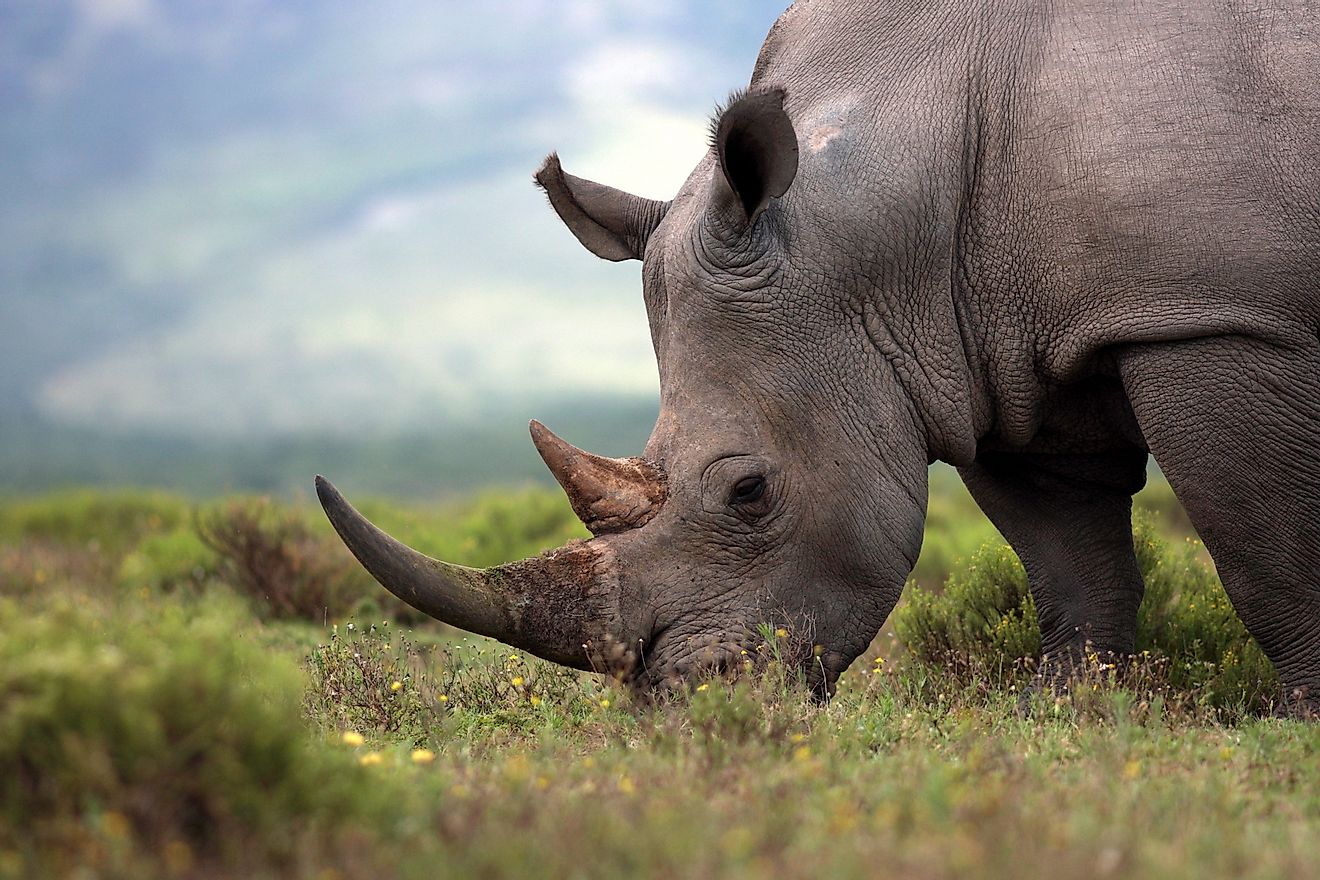
- The white rhinos are massive creatures with females weighing about 1,600 kg and males weighing around 2,400 kg.
- Three of the five rhino species are critically endangered.
- The demand for rhino horn to prepare traditional medicine in some Asian countries is the biggest threat to the world's rhino populations.
Rhinoceroses are odd-toed ungulates belonging to the family Rhinocerotidae. Currently, there are five extant species in this family of which two are found in Africa and three in Southern Asia. The rhinoceroses, like elephants, are considered as one of the last living megafauna of our planet. Rhinoceroses are herbivorous by nature, possess a thick protective skin, a small brain compared to body size, and horns. Rhinos are also one of the most threatened animals of the world. Here we discuss the 5 extant species of rhinos
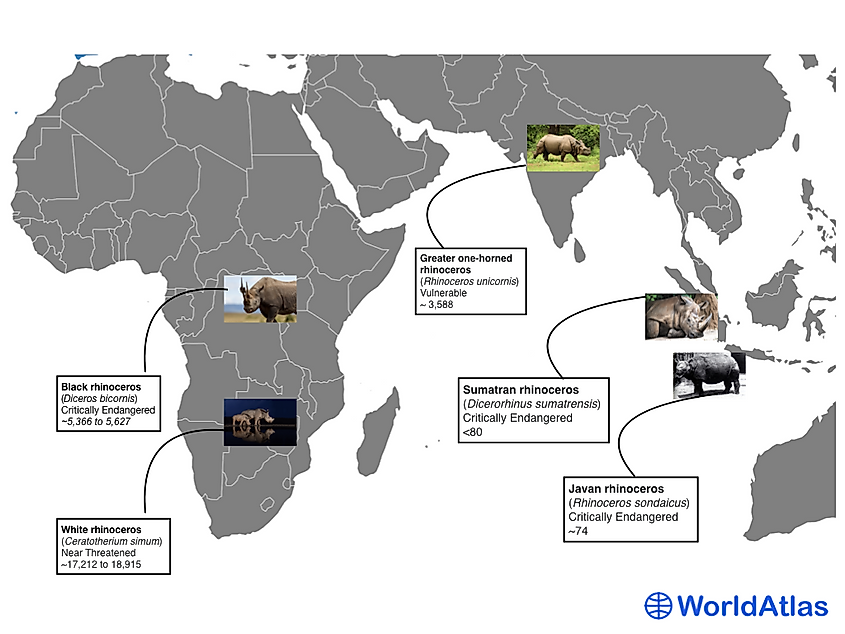
White Rhinoceros
- Alternative names: Square-lipped rhinoceros
- Scientific name: Ceratotherium simum
- In-situ population: 17,212 to 18,915
- IUCN Red List Classification: Near Threatened
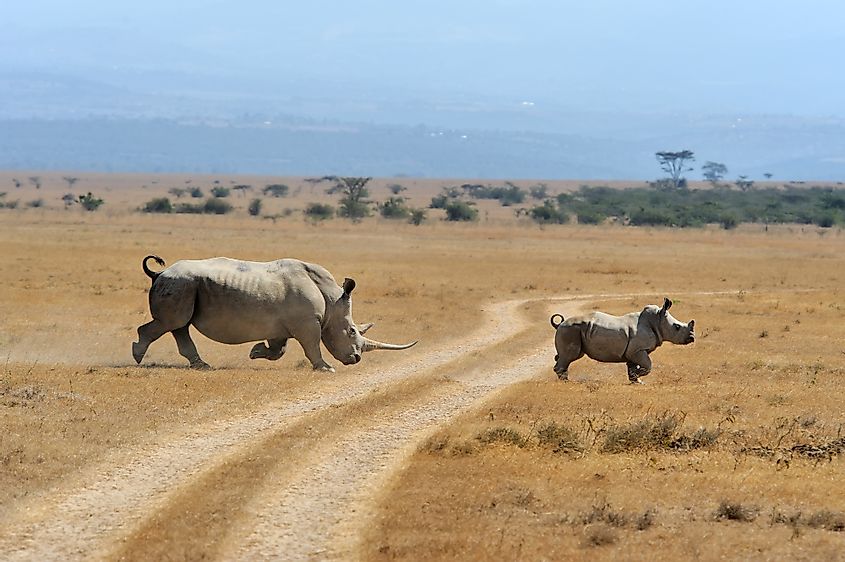
The white rhinos (Ceratotherium simum) are massive creatures with females weighing about 1,600 kg and males weighing around 2,400 kg. The length of the rhinos ranges between 11 feet and 15 feet and the height at the shoulder ranges from 5.9 feet to 6 feet. The white rhinoceros bears two horns on its snout with the front one being larger than the back one. The rhino also possesses a prominent muscular hump that is needed to support the weight of its large head. Though they are named white rhinoceros, the color of these animals ranges from yellowish brown to slate gray. Body hair is sparsely distributed and mainly concentrated in the tail bristles and ear fringes. The distinctive flat, broad mouth of these rhinos is used for grazing.
White rhinoceros is further classified into two subspecies, the northern white rhinoceros (Ceratotherium simum cottoni) and the southern white rhinoceros (Ceratotherium simum simum). The latter is the most abundant type of rhino in the world with a population of 20,405. The former suffers an opposite fate and is critically endangered. Only three known individuals of this species survive today.
a. Northern White Rhinoceros
The northern white rhinoceros (Ceratotherium simum cottoni) was widespread at one point of time when its range spread across the northern parts of sub-Saharan Africa. These rhinos were found in the African countries of Uganda, South Sudan, Central African Republic, Chad, and Cameroon. Today, northern white rhinos are possibly extinct in the wild. All the three surviving members of this subspecies belong to the Dvůr Králové Zoo in the Czech Republic. They are currently kept in the Ol Pejeta Conservancy in Kenya and are surrounded by round-the-clock armed guards.
b. Southern White Rhinoceros
The southern white rhinos (Ceratotherium simum simum) live in the savannahs and grasslands of southern Africa from Zambia to South Africa. This rhino subspecies was on the brink of extinction in the early 20th century with less than twenty individuals remaining in a single reserve in South Africa. Conservation efforts have helped recover the numbers of this type of rhino. However, poaching still continues mainly triggered by the illicit rhino horn trade for traditional Chinese medicine preparations.
Black Rhinoceros
- Alternative names: Hook-lipped rhinoceros
- Scientific name: Diceros bicornis
- In-situ population: 5,366 to 5,627
- IUCN Red List Classification: Critically Endangered
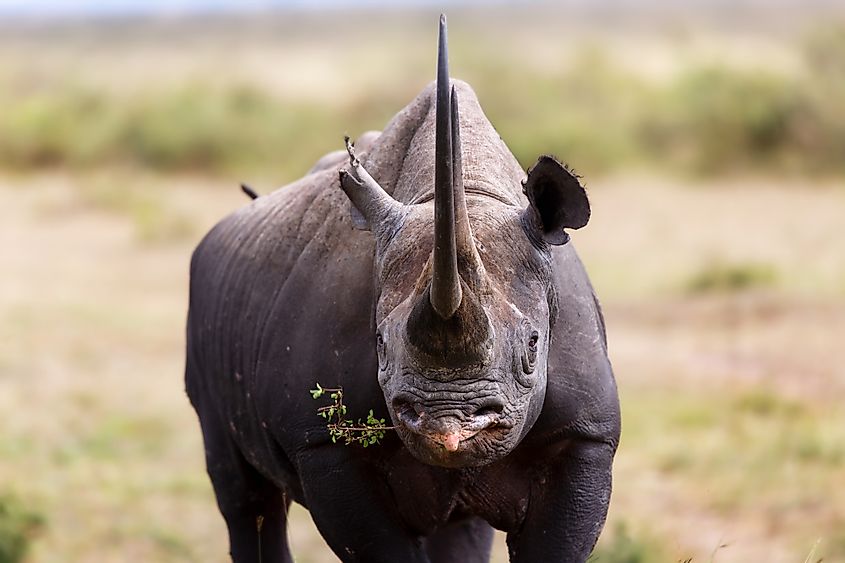
Though not truly distinguished by color, the black rhinoceros was named so to distinguish it from the white rhinoceros. An adult black rhinoceros is significantly smaller than the white species and weighs between 850 kg and 1,600 kg. The females are smaller than the males. The rhinos attain a height that ranges between 59 and 69 inches at the shoulder and a length between 11 feet and 13 feet. These rhinos also possess two horns with the front one being longer than the rear one. A third smaller horn might also exist in some individuals. The black rhino has a pointed mouth used to grasp twigs and leaves while feeding.
Extensive poaching of the black rhinoceros reduced the numbers of this type of rhino significantly from an estimated 70,000 in the 1960’s to only 2,410 in 1995. However, intense efforts of conservation led to a rise in the rhinoceros numbers to 4,880 in 2010.
The black rhinoceros is classified into four subspecies. These subspecies include:
a. South-central Black Rhinoceros
The South-central Black Rhinoceros (Diceros bicornis minor) is the most common among the black rhino subspecies. The rhinos occupy territory in Tanzania. Zambia, Mozambique, Zimbabwe, South Africa.
b. South-western Black Rhinoceros
This black rhino subspecies, Diceros bicornis occidentalis lives in arid and semi-arid savannahs of western Botswana, Namibia, southern Angola, and western South Africa.
c. East African Black Rhinoceros
This subspecies, Diceros bicornis michaeli, of the black rhino is primarily found in Tanzania.
d. West African Black Rhinoceros
This rhinoceros Diceros bicornis longipes subspecies was declared extinct in November 2011.
Javan Rhinoceros
- Alternative names: Sunda rhinoceros / lesser one-horned rhinoceros
- Scientific name: Rhinoceros sondaicus
- In-situ population: 74 animals
- IUCN Red List Classification: Critically Endangered
The Javan rhinoceros (Rhinoceros sondaicus) is a type of rhino with only about 60 survivors in the world today in the Indonesian Java Island. The Javan rhinoceros also has a single horn, similar to the Indian rhinoceros. It has a hazy gray colored skin with folds in the back, shoulders, and rump that gives an armored look to the rhino.
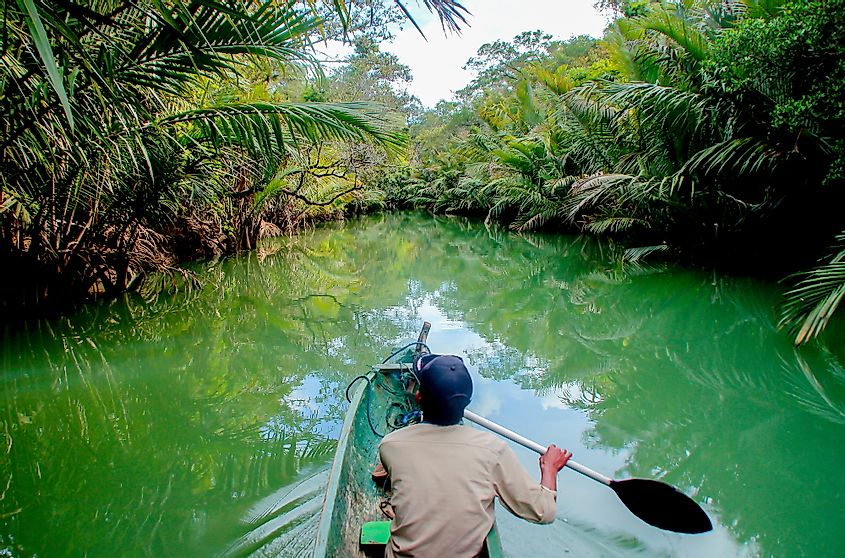
The Javan rhinoceros reaches a length of about 10 feet and height of 4 feet 11 inches to 5 feet 7 inches. They weigh between 900 kg to 1,400 kg. Male horns grow to 26 cm while females might have knob-like horns or none at all. The Javan rhinoceros prefers to inhabit dense lowland forests, reed beds, and tall grass habitats.
Indian Rhinoceros
- Alternative names: Greater one-horned rhinoceros / great Indian rhinoceros
- Scientific name: Rhinoceros unicornis
- In-situ population: 3,588
- IUCN Red List Classification: Vulnerable
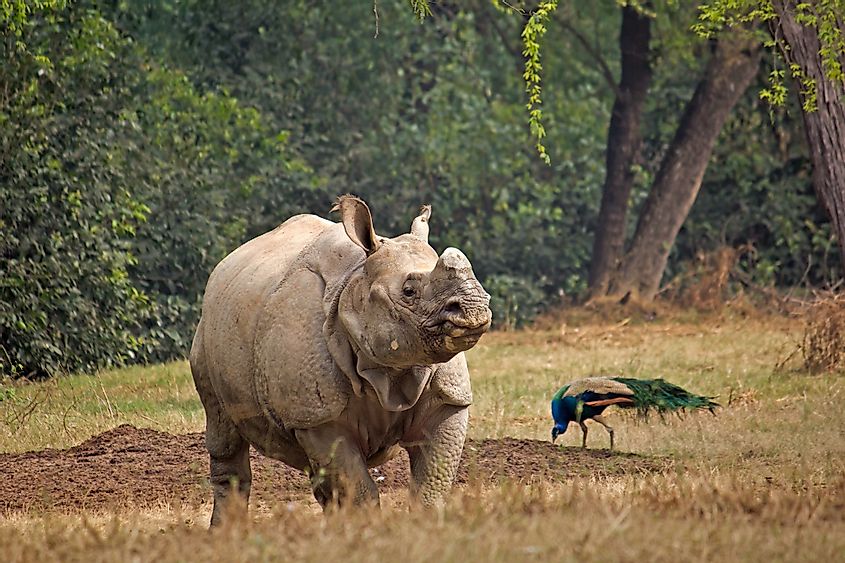
The greater one-horned rhinoceros or the Indian rhinoceros (Rhinoceros unicornis) adorns a single 20 cm to 60 cm long horn and is nearly as large as the African white rhinoceros. The Indian rhinoceros has a thick, silver-brown skin that forms huge folds all over the body of the rhino. The shoulders and upper legs of this type of rhino are covered by wart-like bumps and sparse body hair. Males weigh around 2,500 to 3,200 kg, and females weigh about 1,900 kg. Though these rhinos once inhabited extensive range stretching from Pakistan to China, today, these animals have a highly limited range. They are found in some protected areas of India and Nepal. A few pairs of the Indian rhinoceros are also found in the Lal Suhanra National Park in Pakistan. The Kaziranga National Park in Assam, India hosts two-thirds of the Indian rhino population.
Sumatran Rhinoceros
- Alternative names: hairy rhinoceros / Asian two-horned rhinoceros
- Scientific name: Dicerorhinus sumatrensis
- In-situ population: less than 80 individuals
- IUCN Red List Classification: Critically Endangered
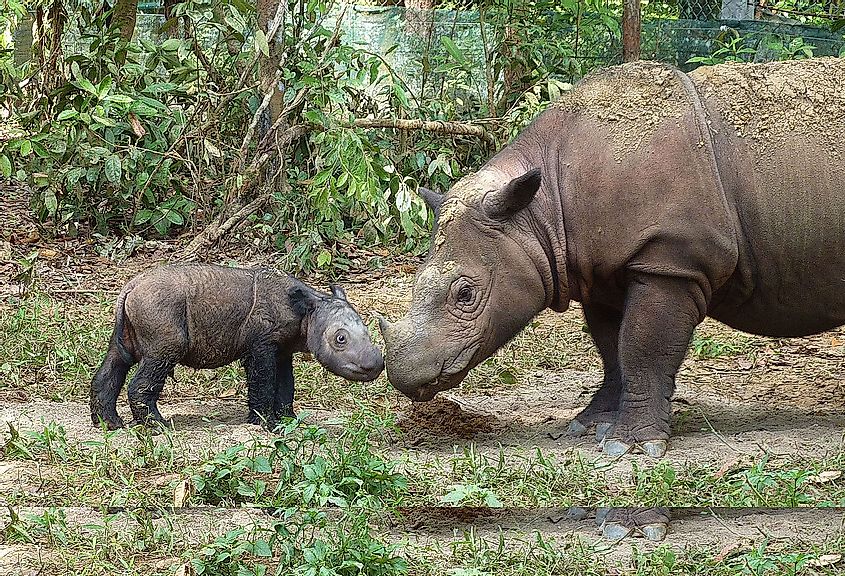
The Sumatran rhinoceros (Dicerorhinus sumatrensis) is a highly threatened type of rhino with only about 275 animals surviving today. The species inhabit the high altitude habitats in Sumatra and Borneo. The Sumatran rhinoceros stands about 4 feet 3 inches tall at the shoulder and attains a length of between 7 feet 10 inches and 10 feet 6 inches. The Sumatran rhinoceros has two horns with the larger (25 to 79 cm) in the front. The rhinos have a short body with stubby lakes, possess a reddish brown skin, and a prehensile lip. It is the most hairy and the smallest extant species of rhinoceros.
The three subspecies of Sumatran rhinoceros include:
a. Western Sumatran Rhinoceros
This subspecies of rhinoceros, Dicerorhinus sumatrensis sumatrensis, was once widely distributed across swamps, cloud forests, and rainforests of South and Southeast Asia. Now they are critically endangered with four, small extant populations: one on Borneo and three in Sumatra.
b. Eastern Sumatran Rhinoceros
Also known as the Bornean rhinoceros (Dicerorhinus sumatrensis harrissoni), this subspecies of Sumatran rhino has three surviving individuals in captivity in Sabah. The Bornean rhinoceros was declared as "extinct in the wild" in April 2015, but the discovery of young female in East Kalimantan proved that there is still some hope left.
c. Northern Sumatran Rhinoceros
Also known as the Chittagong rhinoceros (Dicerorhinus sumatrensis lasiotis), this Sumatran rhino subspecies was the only one of its species to inhabit mainland Asia. The rhino subspecies has been declared as critically endangered by the IUCN as reports of the existence of very small populations of this subspecies in the Malaysian Peninsula and Burma has been recorded time and again.
The Urgent Need To Conserve The Rhinos -

Sadly, all the types of rhinos discussed above are highly threatened, and many of them are on the brink of extinction. The demand for rhino horn to prepare traditional medicine in China and Vietnam has been the biggest reason for the disappearance of these massive creatures. The lure of big money has resulted in indiscriminate poaching of these animals for a cause that is considered to be unjustified by modern medical science. Habitat loss, habitat fragmentation, competitive grazing are the other factors that have accelerated the loss of wild rhinos. There is an urgent need to give maximum protection to the remaining survivors of the world’s rhinoceroses to recover the populations of these creatures to sustainable numbers.







